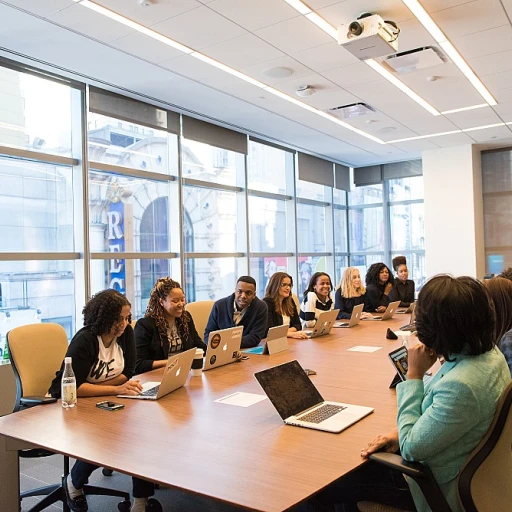Understanding the Link Between Employee and Customer Satisfaction
In today's competitive business landscape, bridging the gap between employee satisfaction and customer satisfaction is no longer optional for companies aiming for success. The happiness of your employees significantly impacts the quality of service they deliver to your customers. When employees are engaged, motivated, and valued, they tend to exhibit higher levels of dedication and productivity. This is known as the "experience revolution," where the direct correlation between employee experience and customer satisfaction translates into business success and customer loyalty.
The ripple effect is evident – an engaged workforce results in improved customer service outcomes, positive interactions, and overall enriched customer experience. Providing a class customer interaction begins with the quality of the workplace environment, highlighting the importance of fostering a people-focused business model. A happy employee can pivot their enthusiasm and positive outlook into delivering a memorable experience for your customers, catalyzing the overall success of your company.
Prominent businesses have recognized this vital link. Companies like Ritz Carlton and Chick-fil-A are exemplary in nurturing an environment where employee satisfaction is prioritized, leading to unparalleled service aptitude and customer loyalty. As we delve into further sections, you'll learn about tools and platforms that enhance employee engagement and why HR tech is revolutionizing how businesses approach these commitments.
John DiJulius, a bestselling author, emphasizes a concept pivotal to today’s thriving companies – the "service revolution". He argues that in order to improve customer satisfaction, businesses should first enhance the working conditions and outlook of their workforce. If you're interested in learning about creative ways businesses are celebrating employee milestones, you can explore this guide to making work anniversaries special.
The Role of HR Tech in Enhancing Employee Engagement
Boosting Engagement With Innovative HR Solutions
In the fast-evolving landscape of business, the integration of HR technology has become a cornerstone in enhancing employee engagement and satisfaction. When employees feel engaged and valued, their attitude and performance improve, leading to better service for customers. Whether it’s making your employees smile or providing them the right tools to excel, every little thing contributes to a positive employee experience.
The role of HR tech is not just about automating processes; it's about creating an experience where people genuinely love coming to work. Companies that have embraced this service revolution often see a direct correlation between employee satisfaction and business success. The Ritz Carlton is one such example, often praised for its class customer service, achieved through relentless focus on employee engagement.
Some of the key areas where HR technology can influence include:
- Improved Communication: The digital transformation allows for seamless and open communication channels, ensuring that your employees' voices are heard.
- Personalized Feedback Systems: Regular, personalized feedback can drive motivation and show employees that their contributions are valued.
- Enhanced Learning and Development: Innovative platforms offer tailored learning opportunities that don’t just meet business goals but also cater to the professional growth of each employee.
Understanding the nuances of your business and the unique needs of your employees can be challenging, but the introduction of the right HR tech solutions can bridge those gaps effectively. As the experience revolution continues, leveraging these tools can lead to happier employees and, ultimately, satisfied customers.
Optimizing Employee Engagement with Advanced Tools
Efficient human resources technology is an essential component in bridging the gap between employee satisfaction and customer satisfaction. More than just a process, it's an initiative aimed to transform how companies engage with their workforce, ultimately enhancing the customer experience. Let's delve into some of the tools and platforms making a tangible difference in employee engagement.
To begin with, platforms designed to facilitate employee recognition and reward systems are gaining traction. They allow businesses to appreciate their employees in real-time, acknowledging contributions that align with the company's values and customer service ethos. These platforms are pivotal in motivating employees, leading to increased productivity and satisfaction in their roles, which invariably benefits the customer.
Moreover, tools offering comprehensive analytics and tracking can significantly enhance the understanding of employee performance. They provide insights that are vital for developing more responsive and efficient HR strategies. For those interested in an in-depth exploration of tracking systems, specifically those implemented on Windows platforms, resources such as the
employee tracking system for Windows with e-Monitrix offer valuable information.
Additionally, employee engagement platforms are essential for fostering a culture of continuous improvement and open communication. By leveraging these platforms, organizations can facilitate a service revolution within their business, engaging employees in ways that directly impact the customer experience. Notably, such systems can help in forming strong interpersonal bonds among team members, encouraging a more cohesive and supportive work environment.
Lastly, the integration of feedback tools helps businesses understand the pulse of their employees. This feedback loop is crucial in implementing timely interventions and ensuring employees feel heard and valued. Companies that harness these technologies are positioned to create a class customer service experience, driving the broader experience revolution where both employees and customers are at the heart of business strategy.
Stay tuned as we examine the successes and challenges faced by leading companies in transforming employee engagement through HR tech solutions in our next sections.
Case Studies: Success Stories from Leading Companies
Real-World Success: A Look into Top Companies
Understanding the synergy between employee satisfaction and customer experience is paramount, and several industry-leading companies have set benchmarks in this arena. By prioritizing both facets and leveraging HR tech, these businesses have not only fostered a positive work environment but also amplified their service excellence.
Take the case of a renowned hotel chain, synonymous with exemplifying superior service. Their approach revolves around empowering employees, ensuring their roles are both engaging and fulfilling. By focusing on cultivating an enriching
employee experience, they have elevated their
customer service to world-class levels, turning guests into loyal fans and employees into brand advocates.
Similarly, a famous quick-service restaurant has taken strides toward revolutionizing their
business by aligning their HR strategies with employee happiness. Their commitment to fostering a robust internal culture has not only resulted in high employee retention but also in exceptional customer interactions, creating a ripple of positivity that extends beyond their front doors.
In another inspiring example, a tech giant known for its innovative practices is continuously advancing its workplace through cutting-edge HR solutions. They prioritize
employee engagement by implementing tools that enhance productivity and job satisfaction. The cascading effect has been a substantial increase in
customer loyalty and rave reviews.
These success stories highlight the pivotal role of employee investment. Companies that read and act on the significance of this connection will inevitably witness a remarkable transformation. The
service revolution is upon us, reminding businesses of all sizes that happy employees are indeed the cornerstone of delighted
customers.
Challenges in Implementing HR Tech Solutions
Overcoming Hurdles in HR Tech Implementation
When integrating HR tech solutions to boost employee satisfaction and enhance the customer experience, businesses often encounter several obstacles. Implementing these advanced systems can sometimes feel daunting, but overcoming these hurdles can pave the way for groundbreaking improvements in how your company handles employee and customer interactions.
One of the primary challenges is selecting the right technology that aligns with your company's specific needs. With numerous tools available, it can be overwhelming to decide which platform suits your business best. This decision requires thorough research and a clear understanding of what outcome you hope to achieve. For instance, do you wish to improve employee engagement, streamline HR processes, or enhance the overall employee experience?
Additionally, the integration of new HR tech solutions can encounter resistance within the organization. Employees and management alike may be hesitant to adapt to these changes. Addressing this requires effective change management strategies including clear communication about the benefits – like boosting employee satisfaction and ultimately enhancing customer service – and offering thorough training sessions.
Budget constraints are another significant hurdle. Implementing new HR technologies can require substantial investment. The key is to balance costs with potential ROI, emphasizing how an improved employee experience can translate into better customer satisfaction and drive business growth.
Data privacy concerns also play a significant role in how companies choose to manage their HR tech solutions. Ensuring that any system in place complies with current regulations and protects the privacy of both employees and your customers is crucial, especially as data breaches become more common.
Companies must also consider the technological aspects, such as compatibility with existing systems and scalability as the business grows. A smooth integration process ensures that the technology can grow with the company and continue to deliver value.
Strategic planning and thoughtful implementation of HR tech can make a tangible difference in the overall satisfaction of both your employees and your customers. As the landscape continues to evolve, staying adaptable and informed will help businesses navigate these challenges more effectively.
Future Trends in HR Tech and Employee Satisfaction
Emerging Trends in HR Tech and Their Impact on Employee and Customer Satisfaction
The ongoing evolution in HR tech is changing how businesses manage employee engagement, which directly ties to customer satisfaction. Emerging trends in HR tech focus on areas that foster richer employee experiences and ultimately enhance customer service.
One trend is the amplification of AI and machine learning. These technologies allow companies to gather and analyze employee feedback in real time, helping managers address issues promptly. With a deep understanding of what motivates employee satisfaction, companies can foster a culture that reflects positively on customer experience.
Additionally, the rise of personalized employee experience platforms offers a tailored approach, mirroring the customized service that businesses strive to deliver to customers. These platforms can efficiently gauge employee wellness and satisfaction, akin to tracking customer satisfaction scores.
Also noteworthy is the adoption of mobile-first solutions. More companies are recognizing the importance of allowing remote and flexible work setups, which bolster employee morale. This workplace revolution doesn't just retain talent—it ensures employees are engaged and committed to delivering top-tier customer experiences, aligning with the service aptitude espoused by companies like Ritz Carlton and Chick Fil.
The future will undoubtedly see increased emphasis on integrating gamified elements into HR tech platforms. By making employee engagement activities more interactive and rewarding, organizations tap into intrinsic motivations that fuel both employee and customer satisfaction.
In conclusion, these trends emphasize a shift towards a more engaged workforce, where the line between employee and customer satisfaction continues to blur. A happy, engaged employee, as we see through the service revolution, is the cornerstone of any successful business in crafting exemplary customer experiences.






